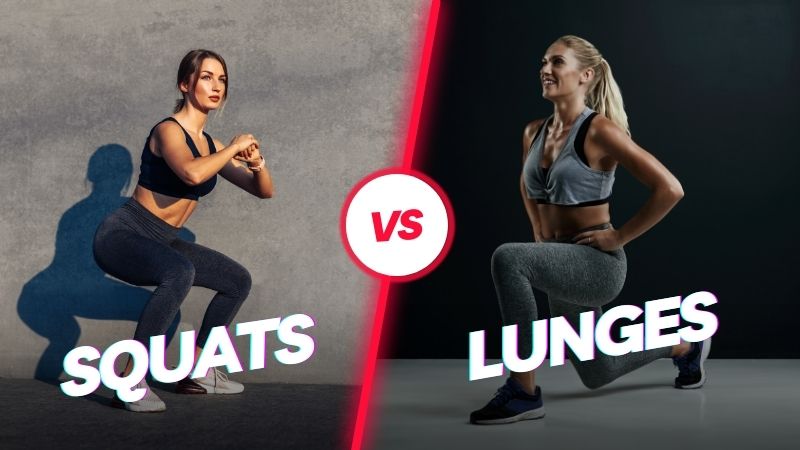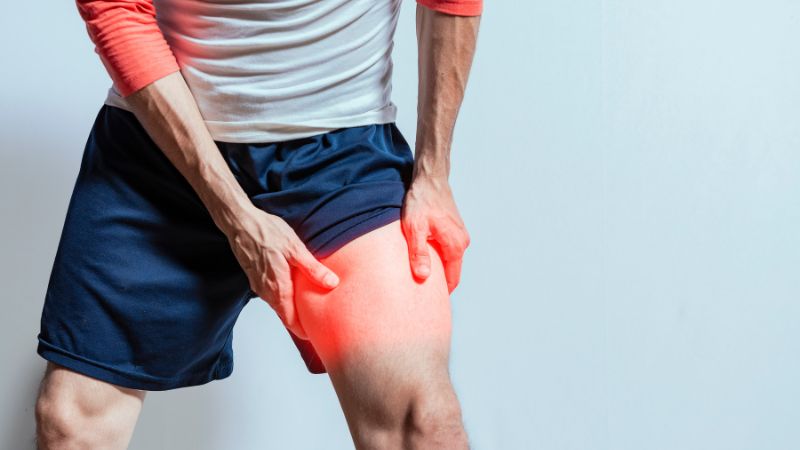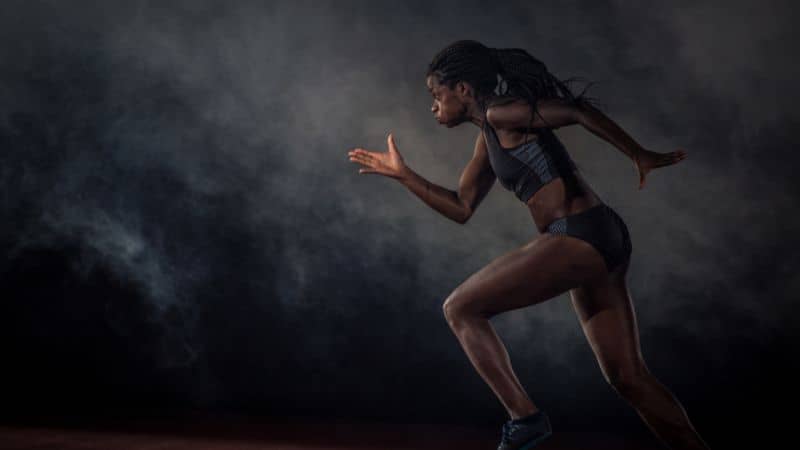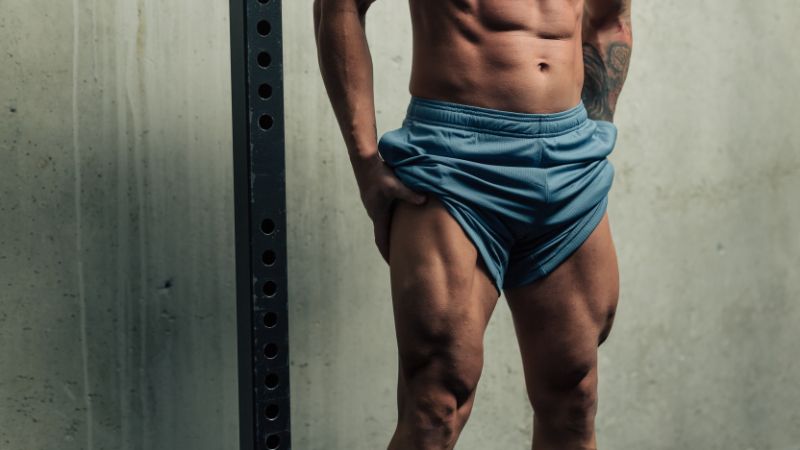Squats vs Lunges: Which is the Better Workout?
Squats and lunges are the best bodyweight workouts focusing mainly on the lower body. They enhance different multiple leg muscle groups including glutes, thighs, quads, and hamstring.
So, it appears that squats and lunges work the same muscles, but in reality, they influence these muscle groups differently.
Picking movements according to your fitness goal can offer adequate benefits. Squats vs Lunges—what’s apt for your fitness objective?
This blog compares the two workouts to find out which one is better for you. But first, we will begin with a short comparison.
Squats vs Lunges: A Short Overview

Squats are compound strength workouts requiring dropping the hip down from the standing position. It is like sitting in the air, which engages the lower body muscle tissue and the core.
After holding the posture, the person has to return to the initial position. The time under tension is really high, thus glutes, hamstring, and thighs are fired up.
In contrast, lunges require the front leg to be tilted at the knee with the foot should lay flat on the floor and the back leg should be bent behind.
The bodyweight workouts activate the front and back legs differently during the exercise.
Whether lunges or squats, both are effective bodyweight exercises.
Still…
The latter is preferred by weightlifters, powerlifters, and bodybuilders.
In contrast, athletes, sports enthusiasts, and yoga practitioners prefer lunges due to their speediness.
A comparison of Lunges vs Squats for mass and other goals can help further differentiate. First and foremost, looking at similar benefits would be a good start.
Squats and Lunges: The Similarities
Performing any workout is a personal preference. This is also applicable in terms of making the choice when opting for squats or lunges.
Surprisingly, there are various similarities between the bodyweight workouts. This questions even the decision of people going for one workout.
Here is the list of similarities between Lunges and Squats:
- Both are bodyweight workouts requiring your entire lower body to perform the move. They particularly target the glutes and improve lower body strength.
- None of them require equipment to perform. This makes them the best bodyweight workouts at home because of the convenience.
- They are performed beginning from a standing position.
- Adding weights can increase the impact of the workouts.
- The workouts help improve balance and coordination.
- There are many variations of squats and lunges with body weight, weights, and even equipment in some cases.
The similar benefits of lunges and squats make the choice questionable. Either of them can help work on the core.
However, this is only one side of the story. The differences between the benefits of squats and lunges influence the idea of preferring one over another in some respect.
Lunges vs Squats: The Differences
Lunges and squats may appear to have similar lower body impact. However, they involve different approaches to the body.
Thus, they improve your physical attributes differently. This segment points them out.
The main differences between lunges and squats are:
- Squats strengthen the core whereas lunges enhance core stability.
- Lunges improve bodily symmetry while a squat improves posture.
- Squats even improve circulation and testosterone production as well as secretion making it the best testosterone-boosting bodyweight workout. There are no such visible benefits of lunges.
- Lunges increase your flexibility and running speed, but squats don’t have such advantages.
- Squats prevent unnecessary pressure on knee joints while improving daily chores and managing bowel movements. Lunges don’t offer the mentioned perks.
- For muscle definition in the lower body, lunges are great. The workout also levels up balance, stability, and coordination. On the contrary, squatting elevates performance, muscle mass, and muscular strength.
The bodyweight workout has diverse effects on the body. This leads to a contrast in squats and lunges benefits.
Opting for one is a difficult choice. The workout may not be applicable in every scenario.
The choice should be based on current activity level, skills level, and fitness objectives. Even for working on the lower body, one may be better than another.
What is the Better Workout for Lower Body?

Squats vs lunges muscles work analysis can show which one is better for the lower body. Here’s an insight.
Lunges mainly target the glutes, quads, and hamstring. So, to perform the exercise and work on the most muscle tissue, a proper form is necessary. It even requires proper coordination between different joints to perform it correctly.
In contrast, squats are a full lower-body workout. It targets almost every muscle tissue in the legs.
This includes the glutes, quads, thighs, soles, calf muscle, erector spinae muscles, and hamstring. On top of that, the leg bodyweight workout even works on the core abs, oblique, and other abdominal muscle tissues.
Moreover, squats emphasize the complete posterior chain and appear as a full-body workout. Its impact on the muscle tissue escalates with the right weights and loads.
The answer is crystal clear—both workouts can improve the lower body. However, squats benefit more muscle tissues than lunges. So, for obvious reasons, it is preferable.
Nonetheless, for beginners, the answer may not be valid. They are totally unskilled and every workout is new to them. The easier one would better option, we have to find it.
Lunges Or Squats: What Works Best for Beginners?
For beginners, an easy-going low skill-requiring workout is better. The comparison of skills can help understand the better option.
Lunges require balance, coordination, and certain control over the body. So, it would take a certain level of time to build the skill to perform the workout.
Of course, form and posture matter equally to performing the leg workout.
In contrast, squats don’t need such physical attributes to perform. One has to drop down the hip while standing to perform the workout.
Although one can’t get the correct form in a single attempt, performing a few times can make anyone perform the basic squats for sure.
Given the details, for beginners squats are a much better option. Try getting the right form initially.
Use a chair or bench underneath while trying to squat above it without letting your hips touch it. Practicing squats this way diminishes the risk of injuries.
Beginners should squat for 1 or 2 sets of up to 12 reps. only. First, practice the workout for 2 weeks before increasing reps, set, and rest duration.
Afterward, only challenge yourself with the squat variation and squats with weights. After obtaining sufficient strength and stability, go for lunges as well.
The above suggestion doesn’t go with runners. Evidently, the recommendation would vary greatly for them.
Squats vs lunges comparison for runners can help provide the right answer. So, let’s get into it.
What is Better for Runners: Squats Or Lunges?

Runners have a tough time determining workouts for their leg day. Of course, their job demands an extremely strong and reliable lower body.
In general, they don’t follow a strength-training program, which affects their running times. And strong legs are mandatory, particularly for distance runners.
Squats can effectively help strengthen muscle tissue while adding a muscular edge to the physique. On top of that, the workout levels up endurance as well.
However, in case of persistent imbalance between the two legs, lunges can help manage it. As mentioned, the leg workout emphasizes improving body symmetry. Meanwhile, it even reduces the risks of injury during running.
So, rather than opting for one, runners should do both squats and lunges. They can add the two workouts to their leg day workout program.
This would definitely heighten their running times, body function, activeness, and even stamina.
The fitness goals of athletes and sportspersons vary drastically. Thus, the suggestion would develop accordingly.
What Should Athletes Prefer – Lunges Or Squats?
Elevating athletic performance can level up the game for a sportsperson. It can jump up their fitness level which reflects during the game in terms of agility, spontaneity, and speed.
However, there is no significant distinction in making one win over another.
Lunges seem to improve muscular imbalance, bodily symmetry, balance, and flexibility. This can work for athletes focusing on this attribute of the workouts.
Moreover, walking lunges particularly level up endurance, strengthen the knee, and posterior firing.
Thus, performing a combination of different lunges variations with changing intensity can heighten athletic power.
In contrast, squats can work as a strong foundation for athletes during youth. Perfecting basic squats elevates performance and lessens injuries.
Eventually, it contributes to a long and active career by lowering the chances of potentially career-ending injuries.
The workouts are effective for basic physical activities like running, sprinting, lifting, jumping, and transitioning (like in football or basketball).
Evidently, every sportsperson can benefit from the variations of lunges and squats. Their versatility is advantageous for athletes.
They power up your lower body workout to level up your game. Indeed, lunges and squats benefits are visible during the main game.
What Will Be Better for Muscle Gain – Lunges Or Squats?

Bodybuilding entirely depends on muscle damage. The workout causing more muscle injuries triggers a quicker repair response. Thus, muscle mass elevation occurs at a microscopic level faster.
Squats vs Lunges: Which One Helps Achieve Max Muscle Growth?
Considering the features of the workout, squats would be more promising than lunges in this respect.
It causes more resistance to the lower body by keeping the body in tension for a longer duration. Also, the impact of body weight is higher when squatting.
Of course, this naturally triggers more muscle damage resulting in increased repair. This reflects in bodily strength and muscle gain.
Using weights, loads, and different squats variations, the muscle damage can be escalated taking the results to a whole new level.
Even leading bodybuilders and fitness influencers keep squats as a major part of their workouts.
However, they perform more challenging variations of the leg workout with heavier weights. Some even prefer a combo of deadlifts and squats to improve their bodybuilding experience.
With all discussed, it is time to check out different variations of squats and lunges to elevate your workouts. Try as much as possible to intensify your workout program.
Squats vs Lunges: Variations to Try
The leg workouts are effective in particular cases more than others. To maximize their efficacies, trying their different variation can be highly effective.
Here are the different top variations of squats to try:
Bodyweight Squats | Squats with Weights | Squats with Machines/Equipment |
|
|
|
Here are the top variations of lunges:
Bodyweight Lunges | Lunges with Weights |
|
|
Perform as much variation as possible. For progressive overload, try doing weighted squats and lunges. Also, discuss with your fitness trainer for the right sets and reps.
Bodyweight workouts can be an excellent inclusion in your workout program. In the end, we would provide you with a final overview.
The Final Words
Whether toned butt or slender legs, a lower body workout can help achieve the objective. Specifically, lunges and squats are great workouts to enhance leg muscle tissue. They target multiple groups at the same time.
The blog already clarifies that the one you prefer will depend on a number of different factors, mainly your body goals.
To further improve the efficacy, try experimenting with other variations of your chosen workout.
Increase the reps and sets, reduce rest duration between workouts, elevate workout speed, and heighten load. Doing these things can enhance the impact of the workout.
With this, I sign off and let you choose the best workout style for you. If you’ve any more questions, please drop them down below.
PEOPLE ALSO READ: Calisthenics Workout for Beginners